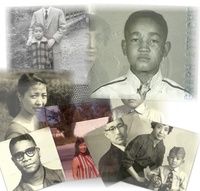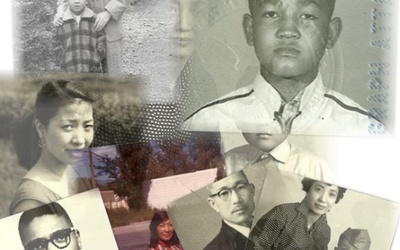Excerpts from "Dream of the water children, dream of the water children"

This is an anthropology of memory, a journal and memoir, a work of creative non-fiction. It combines memories from recall, conversations with parents and other relations, friends, journal entries, dream journals with postcolonial critical analysis.
This first book of a planned trilogy: Dream of the Water Children, dream of the water children focuses on sociological haunting and legacies of race-relations, gender, and war-trauma, told through the lens of the mother-son relationship. Its specific focus is on the mother, Kakinami Kiyoko. It is a work for all those interested in Black-Japanese mixed-race people and their parents, the US militarization of the Pacific after World War II and its complex legacies through Black-Asian identities, and gender relations, and the will to freedom.
Note for the Reader
All the incidents and events in this work, including dreams, are actual events and constructed and/or recorded from memories including recall and meditations, journal entries, conversations and interviews. Although memory and journal entries have been recalled and used, I have taken liberty in the writing of memory itself, using certain tones and descriptions in lieu of not remembering or knowing completely, certain details of past events. Some names have been changed to protect people’s identities. I have noted references to those events, facts, and comments that are not from memory or conversation.
Since I am a ethnographic research scholar, as well as all of the categories that identify me as person, race, gender, socio-economic class, sexual orientation, from a certain region, time-period in history, with certain relations with history, my parents and friends, places, and my ways of thinking and remembering, the vignettes I produce for you, the reader, in this book, represent all of these parts of me, without leaving things at the door. In this, there are silences. There are spaces where I hope that the reader will think and question, along with feeling, remembering, in order that we may transgress dominant norms, and therefore easy categories of life. Often these categories keep us apart, afraid, angry, unreal. Memory as a disjointed recall, told through the passages of transnational homelessness, disjunctures and juxtapositions, and the continual legacies that dot the different landscapes, is where I leave you, the reader, with, in order to open dialogues toward peace, social justice, and a different imagination of homelands.
Note from the author:
SEEKING EDITOR: I am presently looking for an editor, familiar with cross-genre writing and transnational, transcultural writing. If you or someone you know would be willing to do this, please contact me!
Also, SEEKING a PUBLISHER. I have multimedia projects and other books in relaiton to this first work, that I would love to work with an interested publisher on.
For these and other inquiries, please contact: fredrickdc@gmail.com
Stories from this series
![Thumbnail for Part 2: The Waters [2 of 2]](https://devmedia.discovernikkei.org/cache/41/9c/419cc5a1b8862f250322399e7d787e09.jpg)
Part 2: The Waters [2 of 2]
June 24, 2011 • Fredrick Cloyd
Read “Part 2: Waters [1 of 2]” >>The Waters (continued)Denver, Colorado 1982 “Hey Boy!…Yeah, You. I’m talking to you Boy!”1 “Yes, officer,” I say to the policeman who had just called out to me at 11:00 at night as I walked home from volleyball practice at the YMCA. The flashlight is shone onto my face as I turned to face him. He sees I’m in a blue warm-up suit with my Onitsuka Tiger (now called Asics) sports bag. There are …
![Thumbnail for Part 2: The Waters [1 of 2]](https://devmedia.discovernikkei.org/cache/e4/cf/e4cfdb32f68db68cc730bb1c4e2dc554.jpg)
Part 2: The Waters [1 of 2]
June 17, 2011 • Fredrick Cloyd
Read “Part 1: Preface” >>The Waters“What am I doing here in this endless winter?” —Franz Kafka, from The Metamorphosis and Other Stories My brown body began writing the Japanese character “水” water when I was four years old. I began writing Chinese characters before I knew any of the more simple phonetic kana characters of Japanese language around that time. I hadn’t even heard of English then. And what I knew of China directly, were my Mama’s Chinese friends in …

Part 1: Preface
June 10, 2011 • Fredrick Cloyd
This is an anthropology of memory, a journal and memoir, a work of creative non-fiction. It combines memories from recall, conversations with parents and other relations, friends, journal entries, dream journals and critical analysis. To learn more about this memoir, read the series description. The Dream “To say that a life is precarious requires not only that a life be apprehended as a life, but also that precariousness be an aspect of what is apprehended in what is living.” —Judith Butler, …


